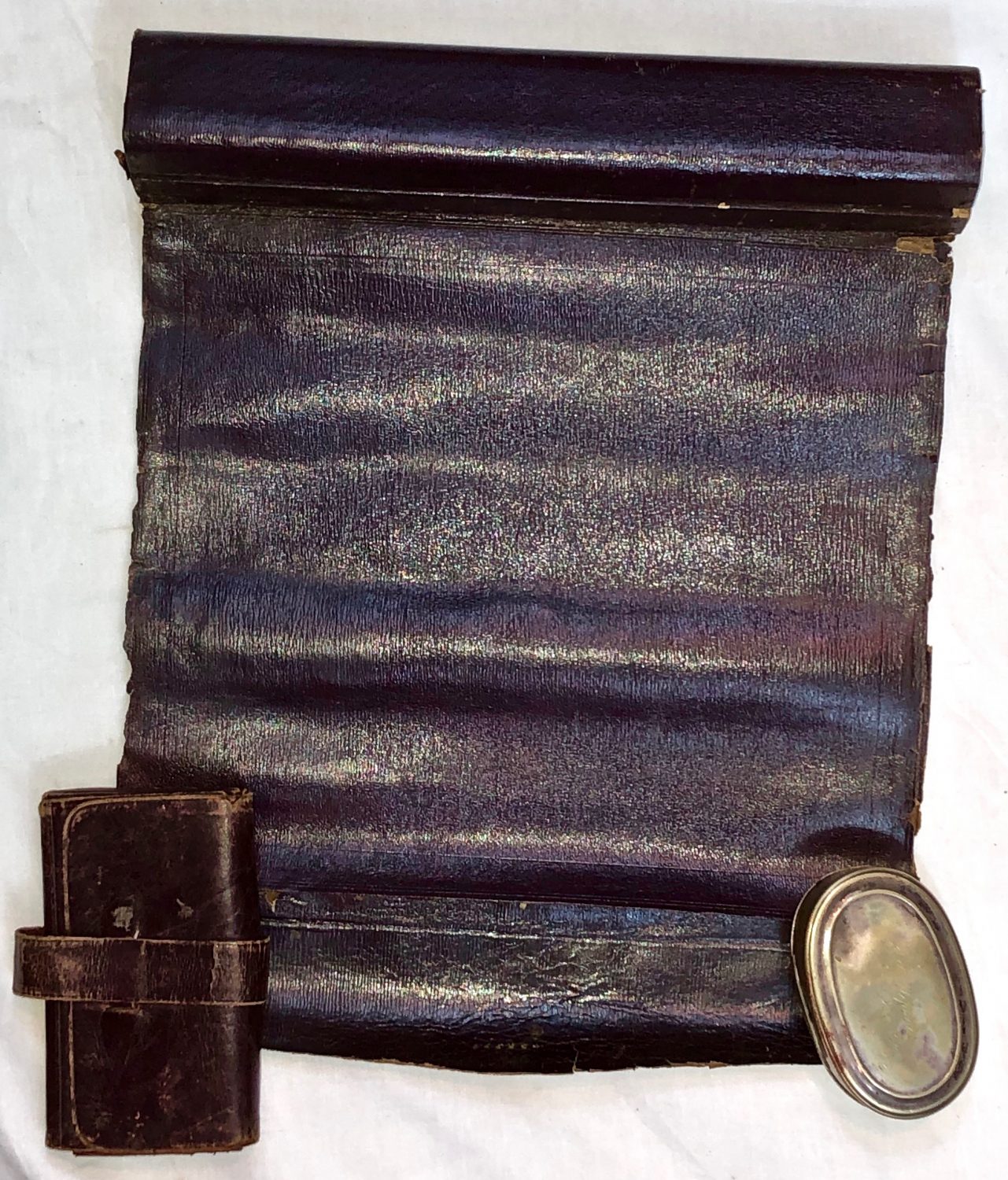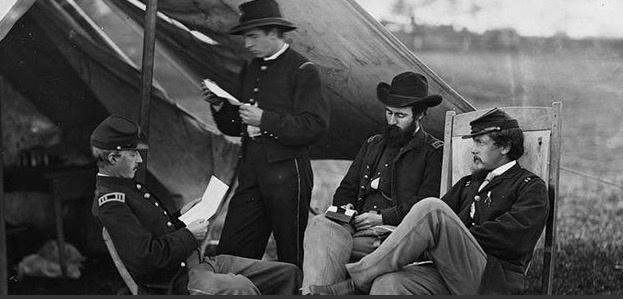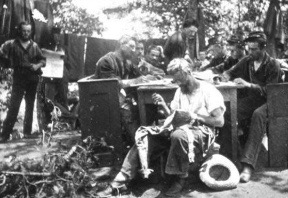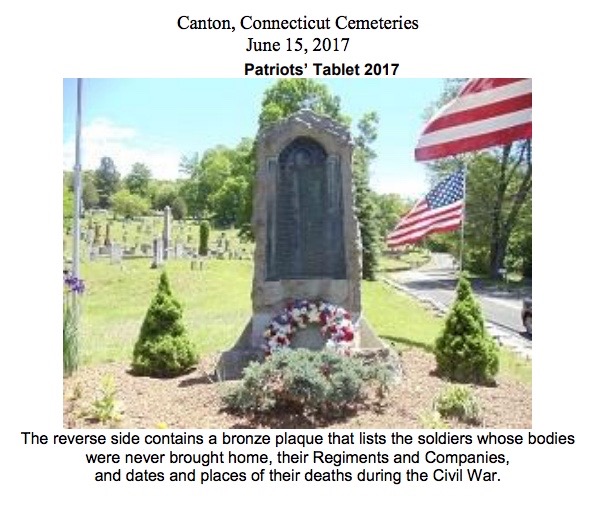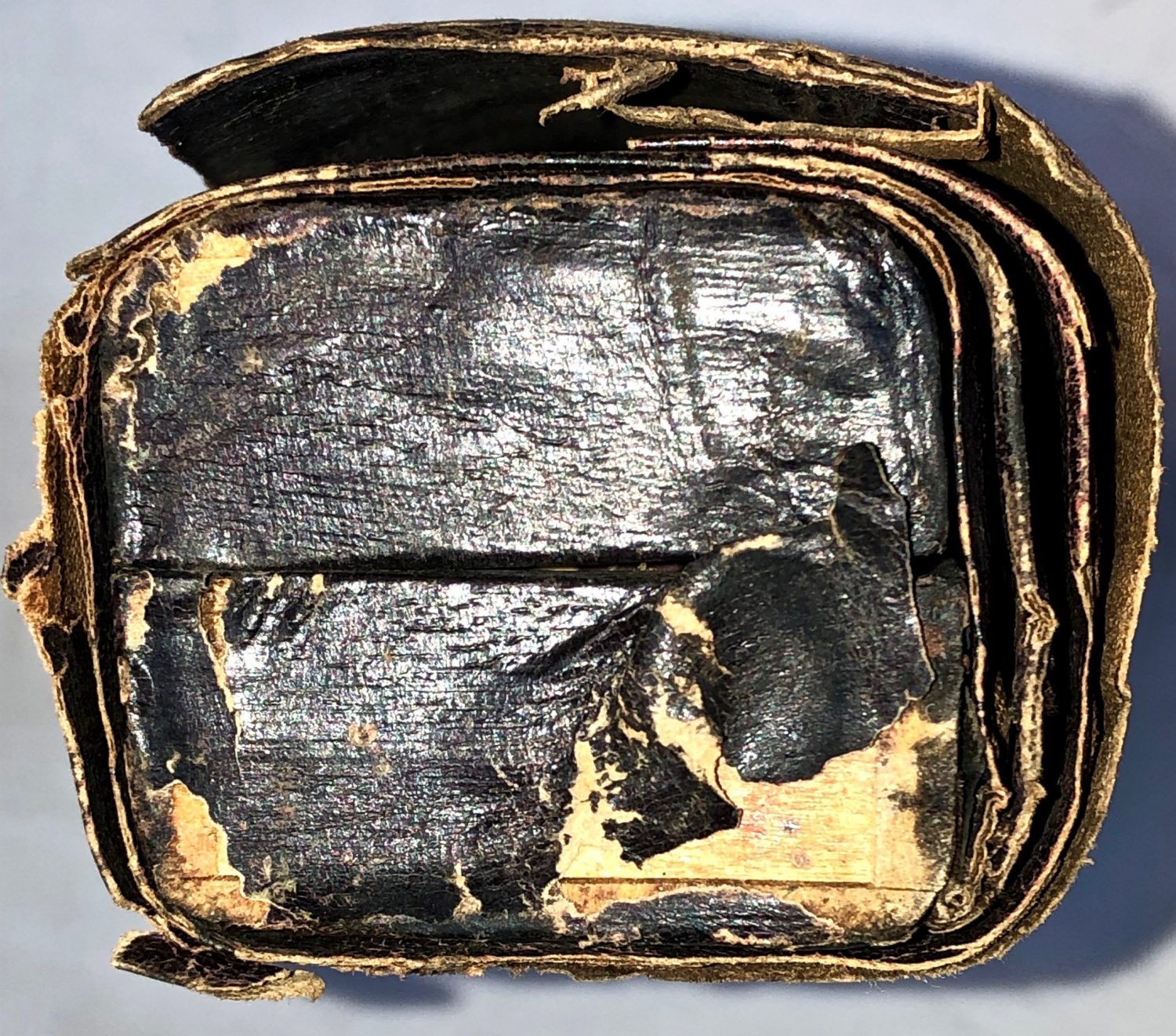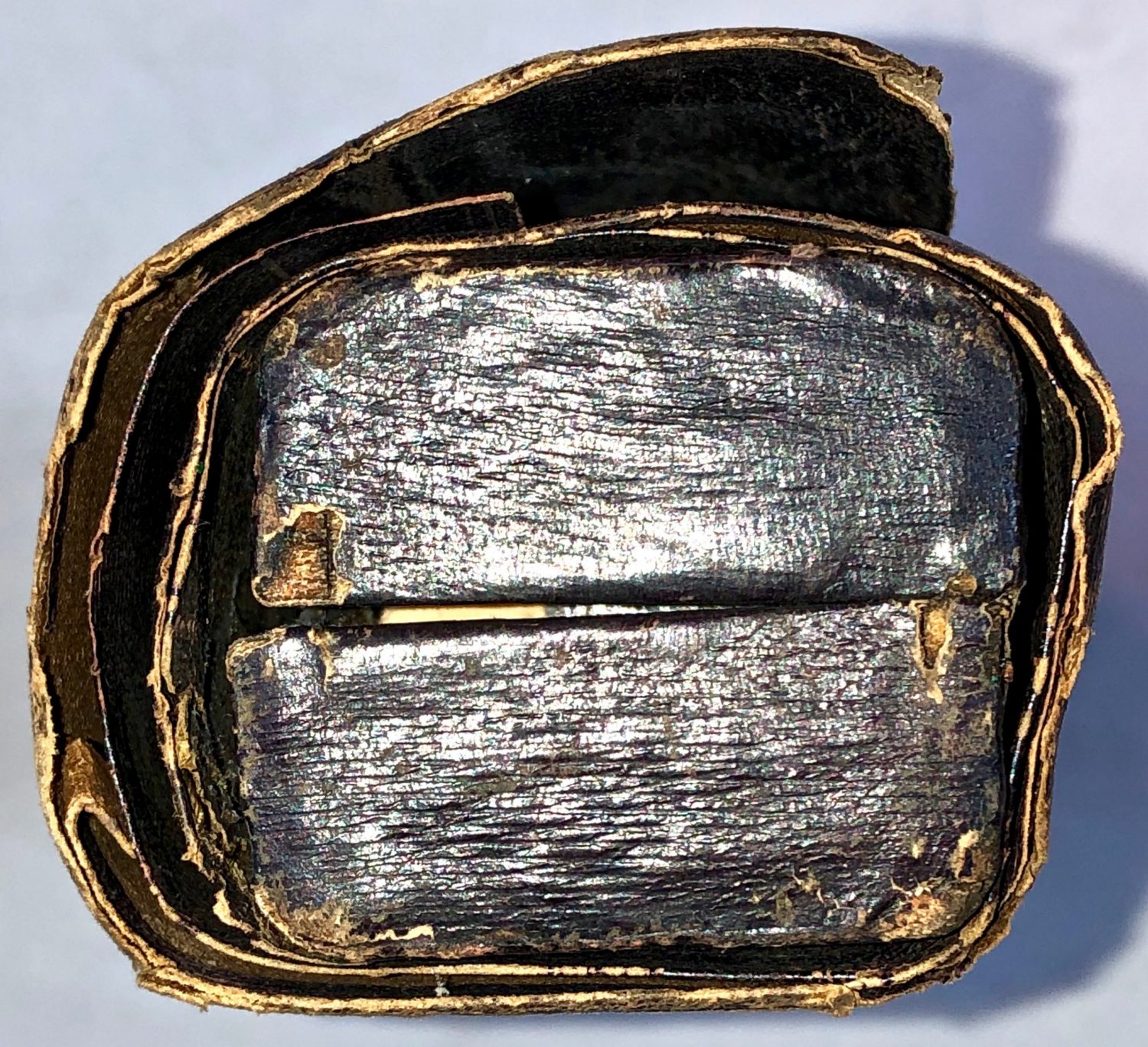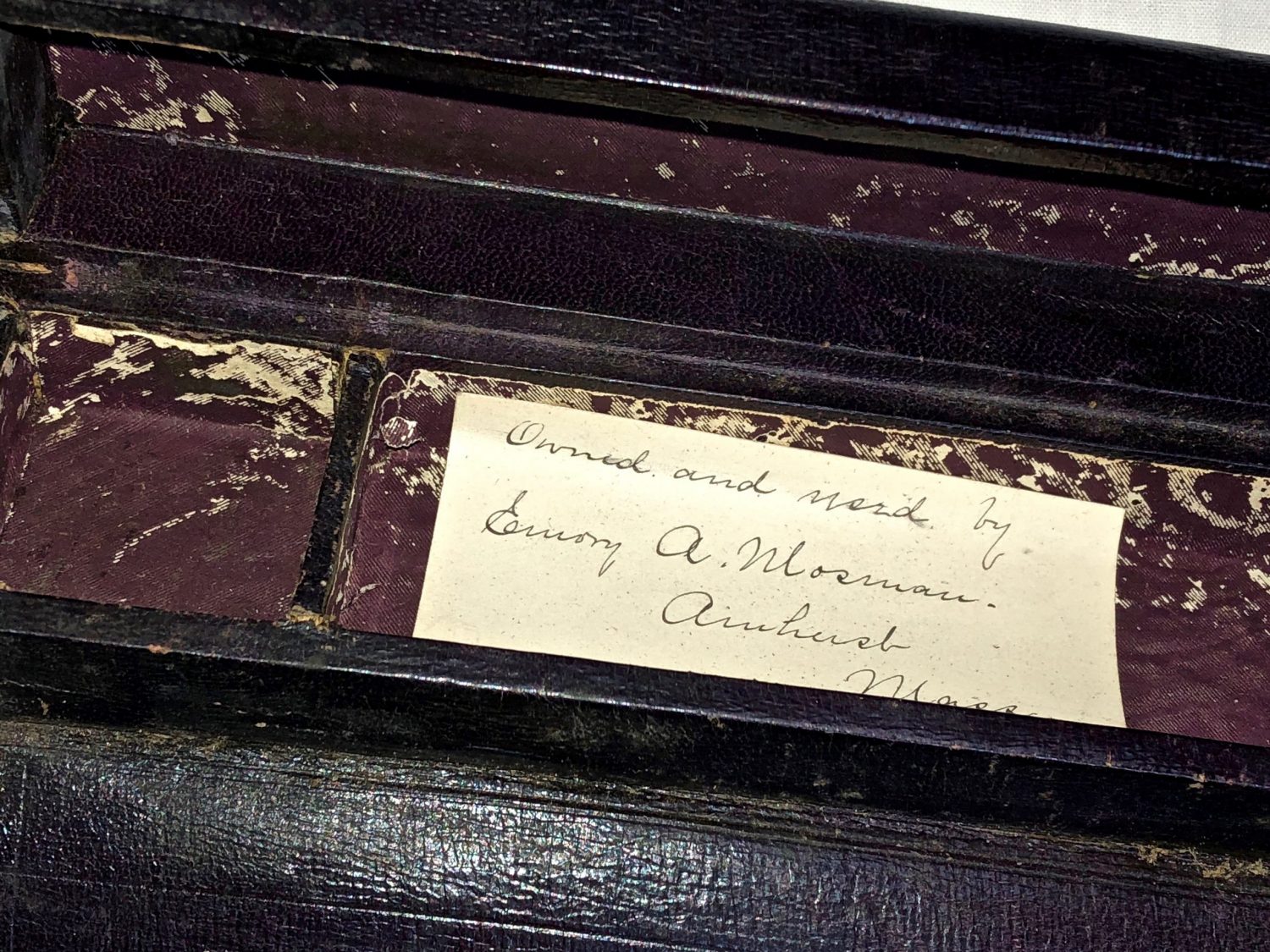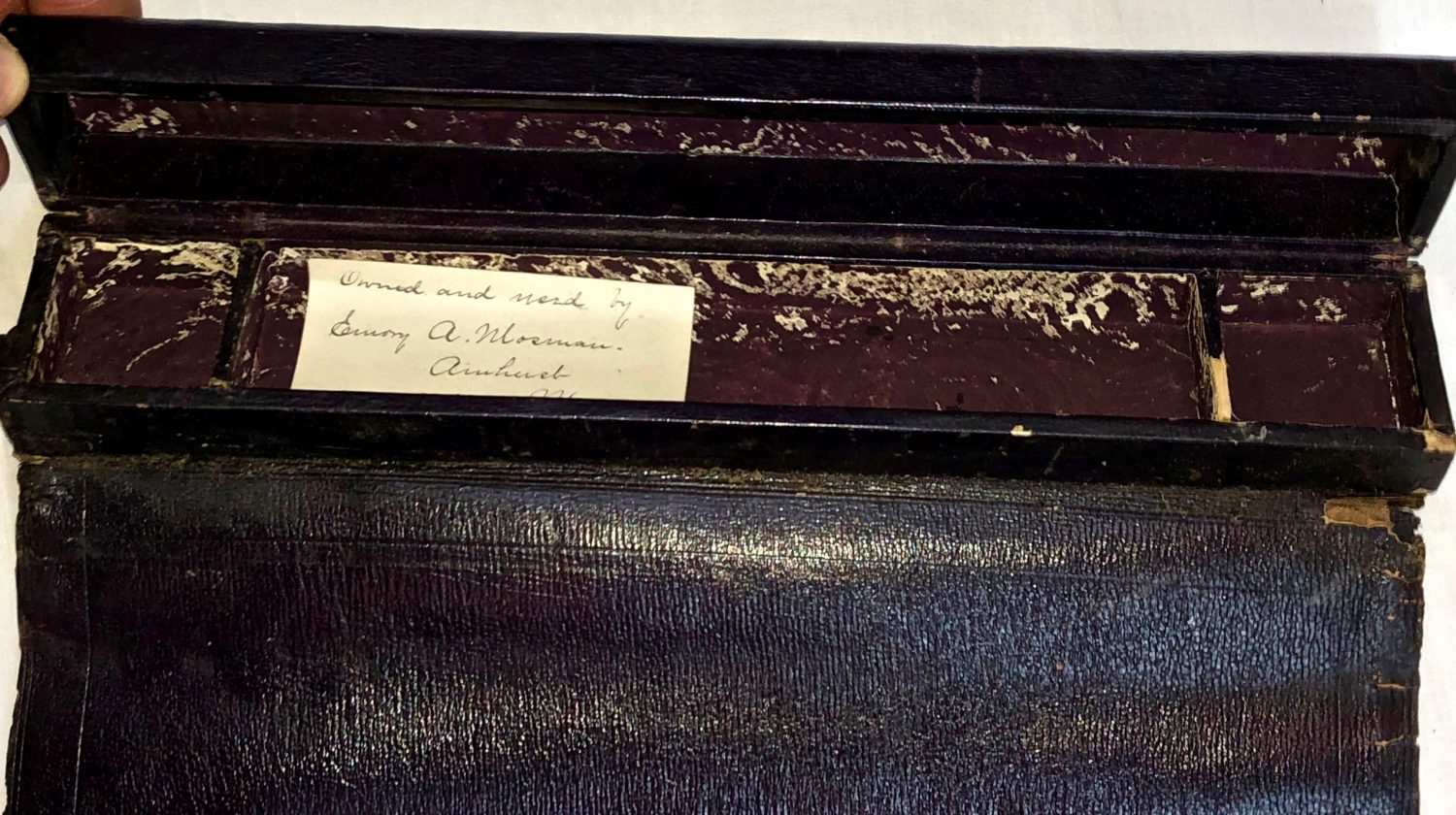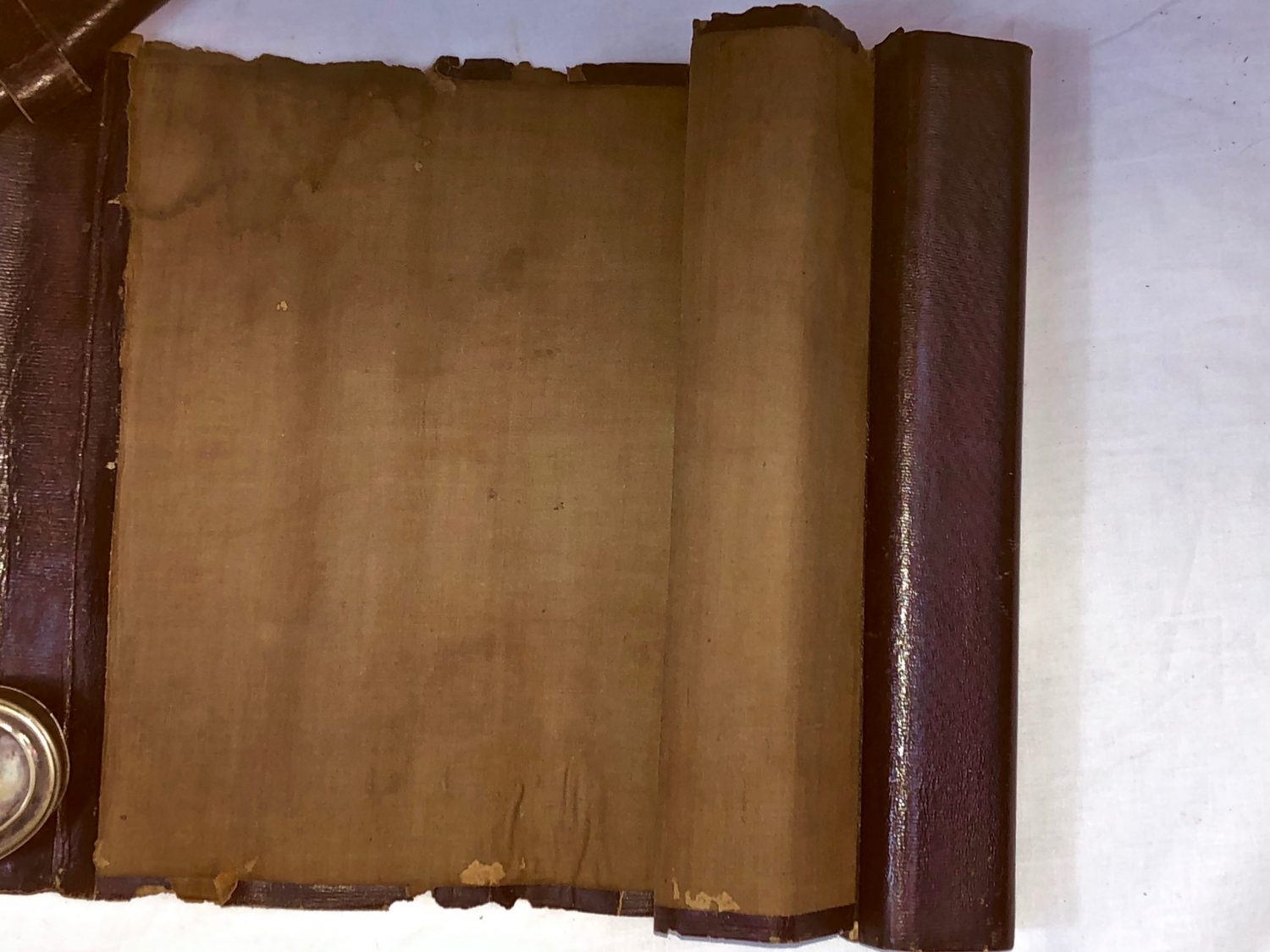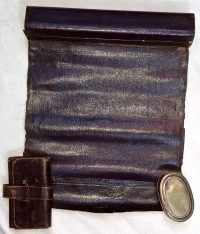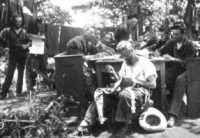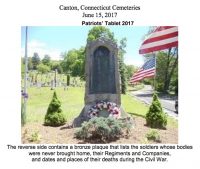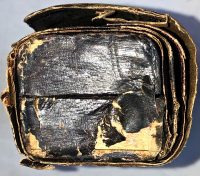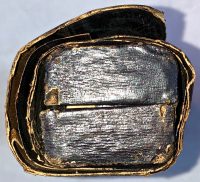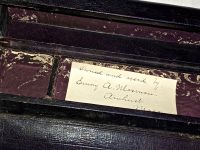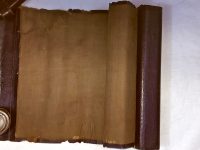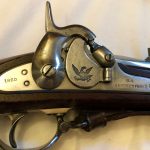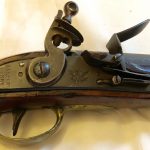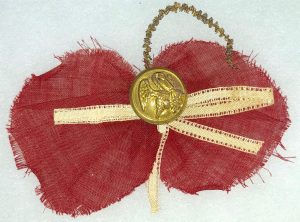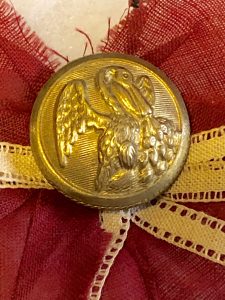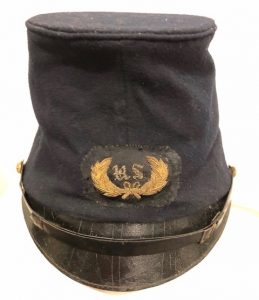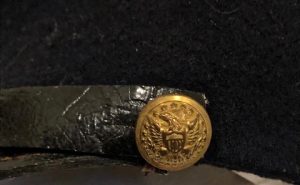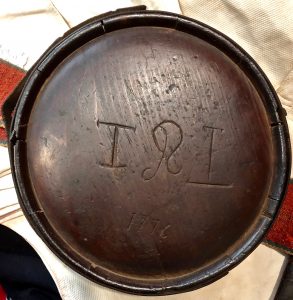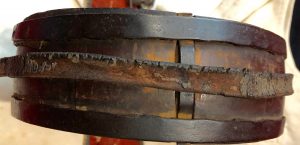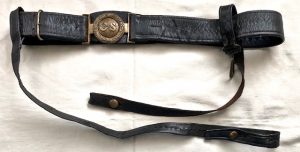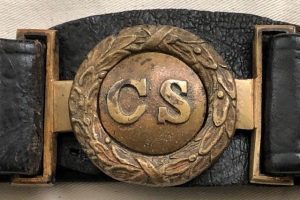Roll-up Traveling Writing Device Id’d to Connecticut Soldier – KIA at Port Hudson
Leather covered roll-up writing surface, with a blotter-like green, paper lining, covered, on the exterior side, by a thin leather wrap; this writing surface is attached to a wooden box, which is also covered with the same thin leather; there is a wooden tray inside the long, rectangular box, that would be used to house pens, pencils and ink. When we obtained this device, we found, in the writing utensil tray, in the box part, a Civil War period, hand written note that stated – “Owned and used by Eme(o)ry A. Mosman / Amherst / Mass.”
SOLD
Leather covered roll-up writing surface, with a blotter-like green, paper lining, covered, on the exterior side, by a thin leather wrap; this writing surface is attached to a wooden box, which is also covered with the same thin leather; there is a wooden tray inside the long, rectangular box, that would be used to house pens, pencils and ink. When we obtained this device, we found, in the writing utensil tray, in the box part, a Civil War period, hand written note that stated – “Owned and used by Eme(o)ry A. Mosman / Amherst / Mass.” Research has revealed that Emery A. Mosman, once a resident of Amherst, Massachusetts, enlisted in Company A, 25th Connecticut Volunteer Infantry, on August 12, 1862. With his regiment, Mosman was dispatched to the Gulf area, where he would be killed, while acting as a scout, near Port Hudson, in Louisiana, on February 15, 1863. This writing tablet is in excellent condition, with the leather covering in overall excellent condition, as well, with some minor loss on one end of the box. This is a poignant reminder of the tragic toll of the Civil War.
Emery A. Moseman
Residence Canton CT; Enlisted on 8/15/1862 as a Private. On 11/11/1862 he mustered into “A” Co. CT 25th Infantry He was Killed on 2/15/1863 at Near Port Hudson, LA (Supposed killed) He was listed as: * Detached as scout (date and place not stated)
25th CT Infantry
( 9-mos )
Organized: Hartford, CT on 11/11/62
Mustered Out: 8/26/63 at Hartford, CT
Officers Killed or Mortally Wounded: 3
Officers Died of Disease, Accidents, etc.: 4
Enlisted Men Killed or Mortally Wounded: 26
Enlisted Men Died of Disease, Accidents, etc.: 61
(Source: Fox, Regimental Losses)
| From | To | Brigade | Division | Corps | Army | Comment |
| Dec ’62 | Mar ’63 | Grover’s | Army and Dept of the Gulf | New Organization | ||
| Jan ’63 | Aug ’63 | 3 | 4 | 19 | Army and Dept of the Gulf | Mustered Out |
CONNECTICUT
TWENTY-FIFTH REGIMENT C. V. INFANTRY.
(Nine Months.)
WRITTEN BY COLONEL GEORGE P. BISSELL, LATE OF THE TWENTY-FIFTH CONNECTICUT VOLUNTEERS. THE Twenty-fifth Regiment Connecticut Volunteers (Colonel George P. Bissell), was recruited in Hartford and Tolland Counties in the fall of 1862. The regiment was composed of the very best material, being almost exclusively young men impelled by a patriotic motive, and from the first took a high stand for efficiency and good discipline. Later in its history, when it had been tried in marches and battles, it was thus described by Adjutant-General Morse in his report to the Legislature for 1864: “This is one of the best of our nine months regiments, and bore a conspicuous part in the advance upon and campaign preceding the fall of Port Hudson. By the bravery always displayed on the field of battle and the patient endurance manifested on many long and arduous marches, it has won for itself a high and lasting reputation.” The Twenty-fifth was mustered into the United States service November 11, 1862, and on the 14th sailed from Hartford for Centerville, L. I., to join at that rendezvous the Banks Expedition. The muster-roll showed 811 men, thoroughly drilled and well appointed, except that they were without rifles, which were served to them on the ship after their arrival in the Mississippi River. The regiment embarked November 29, 1862, in two divisions- one division of five companies, under command of Colonel Bissell, on the steamer “Mary Boardman”; and the remainder, under command of Lieutenant-Colonel Stevens, on the steamboat “Che Kiang.” The destination of the expedition was unknown when the vessels sailed, and the sealed orders were not to be opened till the ships had sailed twenty-four hours to the southward and eastward. The orders, when opened, were found to be simply to report at Ship Island, off the mouth of the Mississippi River, allowing a call at Dry Tortugas for coal, if necessary. The ships duly arrived at Ship Island, and proceeded at once up the river to New Orleans, where they arrived on the 14th of December. On the 16th the “Mary Boardman,” with several of the other ships, went on to Baton Rouge, where they arrived the next day. The “Che Kiang” landed the left wing of the regiment at Camp Parapet, just above New Orleans. Thus the command was unfortunately divided. I say “unfortunately,” for the discipline and experience of the separate and separated wings not being alike, made it difficult when they finally came together, weeks after, to bring them into harmony and full efficiency. The forces landed at Baton Rouge after a brief bombardment of the city, and the Twenty-fifth (five companies) went into camp, first on the United States Arsenal grounds in the city, and later near the cemetery, back of the city, where, after a long delay, the left wing joined the Colonel’s command, and the regiment was once more united and in fighting trim. The regiment was first brigaded under General Halbert E. Paine of Wisconsin, a most noble and brave officer; and afterwards with the Thirteenth Connecticut, Twenty-sixth Maine, and One Hundred and Fifty-ninth New York, under Colonel H. W. Birge of the Thirteenth Connecticut, as Brigade Commander–an officer of rare ability and bravery, and a disciplinarian of the best stamp. Under his command the Twenty-fifth served during its entire term of service. He led them in many battles and marches; and while he was strictness personified, he was so magnanimous, so brave, so reasonable, and so thoroughly a soldier, that the men worshiped him and would follow him into any fire; and now that he has gone they revere his memory. The first work of the regiment was on the first advance on Port Hudson, March 10, 1863, when Colonel Bissell, in command of his own regiment, two detachments of cavalry, and a regular army battery, occupied Bayou Montesano, constructed earthworks, and built a bridge across Bayou Sara. This bridge was designed by Sergeant William Webster of Company I, after a West Point engineer had despaired of the job. The regiment was then seven miles in advance of the army, and in a very exposed and dangerous position. This position they held under a frequently severe fire till the army came up, when they joined the column and went “on to Port Hudson.” They were in the front of the land forces when Farragut sailed by the forts in the “Hartford.” From the banks of the river, the Twenty-fifth witnessed this grand bombardment, and the burning of the frigate “Mississippi” in the night. When the “objects of the expedition had been accomplished” (to use the words of General Banks’s order), the regiment returned to Baton Rouge, passing one wet and dreary night in “Camp Misery”–a night which will never be forgotten by any man who was there, nor will any member present forget the noble act of Quartermaster John S. Ives, who, almost dead himself, rode his almost dead horse into Baton Rouge and brought out to the men coffee and sugar, which they managed to prepare over small fires, and which, no doubt, saved many a man his life. After a short stay at Baton Rouge, the army made another advance on the west bank of the Mississippi, starting March 28, 1863, marching with frequent skirmishes, sailing up the Atchafalaya Bayou, and landing at Irish Bend, where the regiment engaged in its first real battle April 14, 1863. The severity of this fight may be judged of, as we read in the Adjutant-General’s Report the report of the regimental Adjutant, thus: “Our loss, as you will see from the accompanying return of casualties, has been severe, being in all ninety-six killed, wounded, and missing, out of about 350, with which the regiment went into action.” The “missing” was only one man, leaving ninety-five killed and wounded. From this point the regiment marched up to within six miles of the Red River, and of this march the regimental reports speak thus: “What with our loss in battle, details for special service, and the numbers who have given out on our very severe marches, this regiment is much reduced and has to-day only 299 men present, of whom but 248 are fit for duty. You will thus see that though this campaign has been eminently successful, driving the enemy before us through the entire valley of the Teche, from its mouth to its source, it has also been most trying upon the troops. Four engagements and 300 miles’ march in twenty days, call for proportionate suffering which cannot be avoided.” During May and a part of June, the regiment was actively engaged in the siege of Port Hudson, and was constantly under fire in the trenches and in the various assaults on that stronghold, leading the advance on the 23d of May, when a junction was formed with General Augur’s column, which completed the investment of the place. During all the siege the regiment was constantly in the front, and finally participated in the glories of the surrender of the fortress on the 8th of July, having been in constant arduous duty, marching and fighting, since early in March. After the surrender of Port Hudson the regiment returned to Donaldsonville, where it encamped till the expiration of its term of service. I sent to General Banks and offered, for myself and for my command, to remain longer in the department if our services were needed; but he replied that there would probably be no more fighting, and thanking us for our offer, he issued an order returning us to our homes; and the regiment was finally mustered out at Hartford August 26, 1863. In closing this brief sketch of the history of the gallant Twenty-fifth Regiment, a few words may be allowed in praise of the good and true men of whom it was composed. With very few and unimportant exceptions, they were of the best sort of men who were ever banded together for the defense of their country. They submitted to rigorous discipline cheerfully, they marched promptly, and they fought bravely and determinedly. A review of official records shows that the regiment was complimented over and over again by Generals Grover and Birge for the extraordinary promptness with which it always moved, for its entire reliability in any emergency, and for its bravery, as shown time and again, in battle and under severe fire. The men never faltered in long marches, and never wavered under fire; and there never was a time when their commander would have hesitated to lead them against overwhelming odds–into the face of an enemy ten times their number. Ever ready, ever active, ever pushed to the front in times of danger by generals who wanted efficient service and who knew a good regiment when they saw it, the Twenty-fifth was an organization of which the State need not be ashamed. When it was in the field it was an honor to the army and to the volunteer service of our country; and now that years have rolled by, the heart of many a survivor swells with just pride as he says to his children and grandchildren, “I was a member of the Twenty-fifth Connecticut.” ENGAGEMENTS. Irish Bend, La., April 14, 1863. Port Hudson, La., May 25 and 26, 1863. Port Hudson, La., June 14 and 15, 1863. Brashear City, La., June 23, 1863. Bayou Boeuf, La., June 24, 1863.


